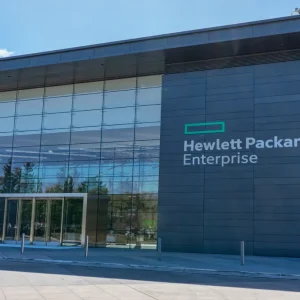
In an era of digital transformation and significant economic as well as regulatory change, the pressure is on for IT modernisation that delivers business value quickly, provide innovation and remain competitive. Yet with studies suggesting that just five percent of organisations have mastered digital transformation, the ever-increasing pace and complexity of change is becoming alarmingly difficult to manage.
Enterprise IT needs to find a way to protect what already works while also accelerating the path towards new innovation. With a reported growth rate of 20 per cent each year, and with over half the market looking to embrace it, the concept of IT modernisation is becoming more widespread. Modernising core IT systems sets out to improve them incrementally by leveraging the investment, retaining what works, but building on it little by little to support new business need.
While modernisation projects rarely fail (after all, they are based on what is already working), industry reports show that rewriting systems carries an eye-watering failure rate of more than 70 percent (Standish Group, Gartner). Package replacements don’t fare much better. You don’t have to look very hard to find evidence of this, with recent headlines showing major household names suffering from IT issues as a result of a new system implementation.
 Start Afresh Without Starting Over
Start Afresh Without Starting Over
The benefit of building upon what is already there is that the value the system already provides – often a decades-old heritage of functionality – is protected and maintained for the future. And in some cases, this heritage works to an organisation’s advantage – differentiating it from competitors.
Additionally, re-using IT applications to support a digital strategy both reduces the effort involved (what is needed is already in place) and can require a much more modest budget. But how does modernisation manifest itself? Can all systems be treated the same? The reality is that each IT estate and each customer need is unique, but business-critical core IT systems share many common characteristics – including the three pillars of ‘what’, ‘how’ and ‘where’:
The ‘what’ – the application itself
- Extending the application code or experience via web, mobile, micro-services and APIs, integrating COBOL based systems into .NET or the Java Virtual Machine
The ‘how’ – the software development delivery process
- Improving the speed at which new features are delivered to the customer by establishing a collaborative, secure and modern (DevOps-based) development process for all applications
The ‘where’ – the underlying infrastructure
- Deploy fit for purpose workloads aligned to business strategy and cost models, taking advantage of contemporary Hybrid IT platforms (Azure, AWS or other cloud infrastructure, Linux, containers etc.)
This simple model is echoed by industry commentators.
In its recent ‘Modernisation: a flexible approach to digital transformation’ white paper, IDC states: “There is an emerging realisation that modernisation can and needs to take many forms.” Today organisations benefit from working with vendors that offer a flexible portfolio of solutions that allow them to implement the most valuable approach to modernisation, based on their specific needs.
IT Modernisation: Taking a Holistic View
It is important to consider beyond the technology requirements of the project itself – support for the current environment and the newly-changed environment, whether that is purely software or a mixture of software and platforms – to its future potential.
Secondary projects to build upon a modernisation project, such as updating the data layer, moving from open systems to open source or embracing cloud, mean broad support and technical flexibility are critical. Vendor lock-in is often a driver for change, so the “new” system must be open and flexible.
Businesses will need to do more than evaluate the tools required to undertake the transition of the workload in question. A key additional step is determining the required operational processes for planning, analysis, transition, development/change, debugging, unit testing and functional testing, as well as a more formalised QA process.
Creating a blueprint for modernisation tasks and future reference architecture enables IT to pinpoint a holistic, pragmatic solution, irrespective of current and future states. However, it must include success criteria such as user acceptance and performance benchmarking of the modernised system.
Additionally, operational support planning will be necessary to run core business processes, which may be leveraging open systems or cloud infrastructure. After all, these newly modernised systems must not fail. As a result, full 24×7 support for core business-critical IT operations to resolve any project issues, based on a proven track record of significant numbers of satisfied customers, will be critical.
By considering the common characteristics shared by business-critical core IT systems, CIOs can take steps to modernise without destroying the company’s previous investment or risking project failure. Smart IT modernisation means recognising the benefits of current systems and building on those to deliver business value and remain competitive in today’s rapidly evolving market.

 Start Afresh Without Starting Over
Start Afresh Without Starting Over





